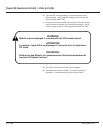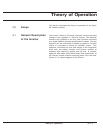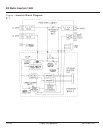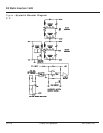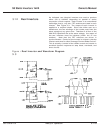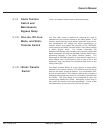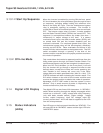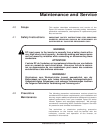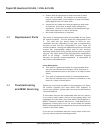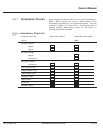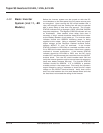
This is an optional feature that is described below.
The ON LINE mode is defined as allowing the load to
operate from the Inverter instead of the Utility power. If the
Inverter should fault for some reason (overload, short circuit,
over temperature, DC voltage not within specification, or
Inverter failure) the system will transfer to the "BYPASS"
mode (through the Static Transfer Switch) if the Utility voltage
is within proper limits. For severe overloads, the
Maintenance Bypass relay located in the receiver cabinet will
be de-energized, shorting out the Static Transfer Switch, thus
preventing damage to the Static Transfer Switch. The
advantage of ON LINE operation is that the AC output is at a
fixed voltage level and frequency and is free of all of the
transients, sags, and brown out conditions that occur on the
Utility power grid.
The Static Transfer Switch is a pair of back to back SCRs
located in the inverter module. The SCRs are turned on as
soon as the Utility voltage is present. It is commanded OFF
by the microprocessor. The receiver cabinet also contains a
maintenance bypass relay which is connected in parallel with
the SCRs. The relay needs to be energized to open the
contacts that parallel the SCRs. Energizing of this relay is
also under the control of the microprocessor. Power to the
microprocessor is from the utility and the DC input.
3.1.3.1.1Static Transfer
Switch
3.1.3.1 On-Line, Off-Line
Mode, and Static
Transfer Switch
3.1.3 Static Transfer
Switch and
Maintenance
Bypass Relay
86-153061-00 3 — 7Theory of Operation
Owner’s Manual




